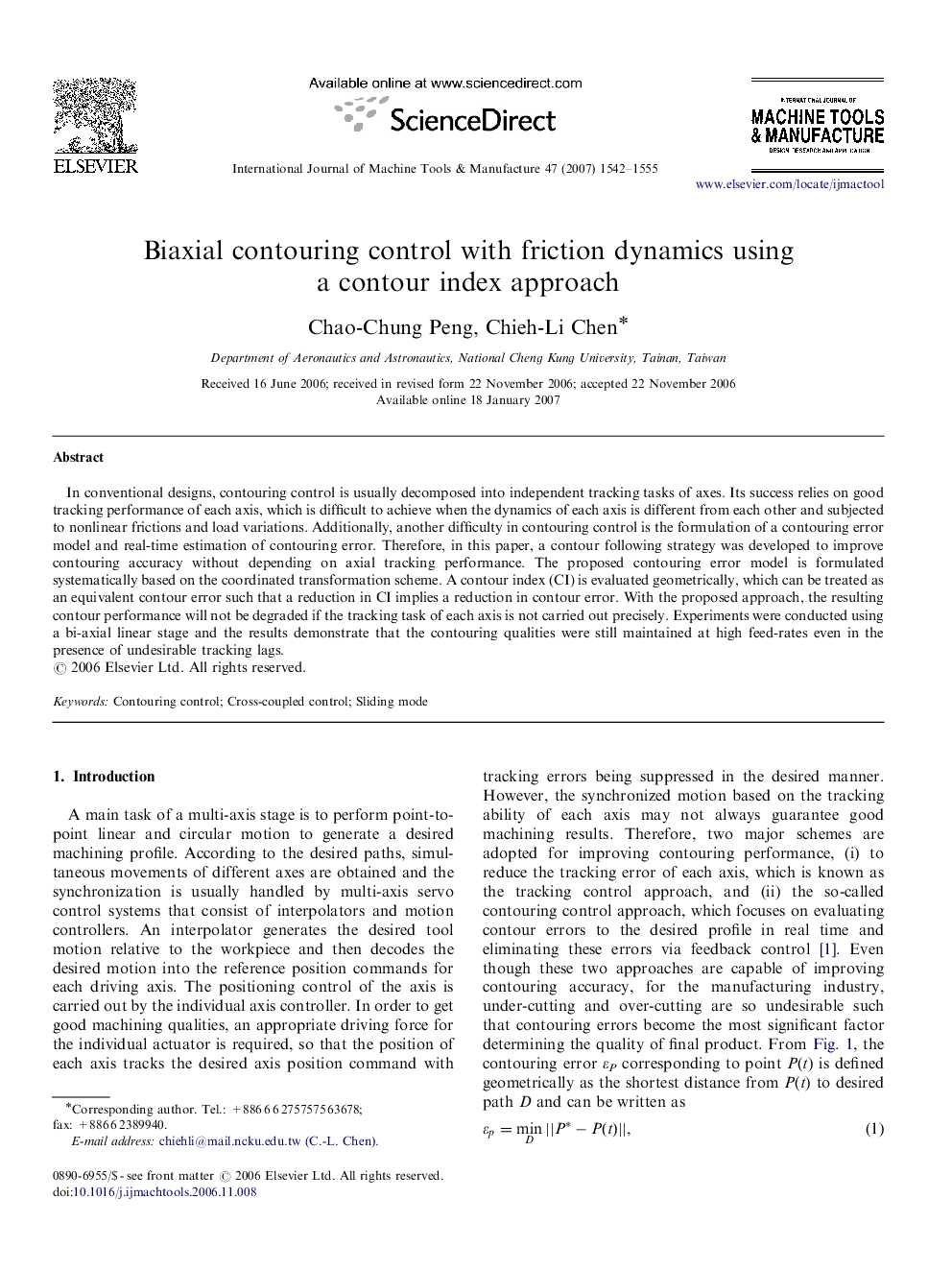| Article ID | Journal | Published Year | Pages | File Type |
|---|---|---|---|---|
| 781223 | International Journal of Machine Tools and Manufacture | 2007 | 14 Pages |
In conventional designs, contouring control is usually decomposed into independent tracking tasks of axes. Its success relies on good tracking performance of each axis, which is difficult to achieve when the dynamics of each axis is different from each other and subjected to nonlinear frictions and load variations. Additionally, another difficulty in contouring control is the formulation of a contouring error model and real-time estimation of contouring error. Therefore, in this paper, a contour following strategy was developed to improve contouring accuracy without depending on axial tracking performance. The proposed contouring error model is formulated systematically based on the coordinated transformation scheme. A contour index (CI) is evaluated geometrically, which can be treated as an equivalent contour error such that a reduction in CI implies a reduction in contour error. With the proposed approach, the resulting contour performance will not be degraded if the tracking task of each axis is not carried out precisely. Experiments were conducted using a bi-axial linear stage and the results demonstrate that the contouring qualities were still maintained at high feed-rates even in the presence of undesirable tracking lags.
